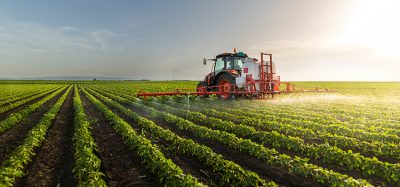Conveyor belts in EHEDG focus
- Like
- Digg
- Del
- Tumblr
- VKontakte
- Buffer
- Love This
- Odnoklassniki
- Meneame
- Blogger
- Amazon
- Yahoo Mail
- Gmail
- AOL
- Newsvine
- HackerNews
- Evernote
- MySpace
- Mail.ru
- Viadeo
- Line
- Comments
- Yummly
- SMS
- Viber
- Telegram
- Subscribe
- Skype
- Facebook Messenger
- Kakao
- LiveJournal
- Yammer
- Edgar
- Fintel
- Mix
- Instapaper
- Copy Link
Posted: 3 July 2012 | Olaf Heide, EHEDG Member | No comments yet
Food conveyor belts can be found in literally every industrial food process. Looking at them as a single item, belts may be just simple components made from steel, fabric or plastic. But they are actually quite important to ensure a smooth and trouble-free process flow.
This article focuses on the specific situation of synthetic conveyor belts using plastic material as main design element – steel belts are a different world of design and need separate consideration as such.
Unexpected failures or breakdowns can be costly and cause severe problems in a con – tinuous production. Hence, conveyor belts contribute to process efficiency and profitability. Furthermore, they are usually in direct contact with food when they are part of a process line. Therefore conveyor belts play an important role regarding safe and hygienic food processing.
Here is the link to the European Hygienic Engineering and Design Group (EHEDG)! Our industry association and all its member companies aim to support and improve safe food production through the hygienic design of equipment and components.
Food conveyor belts can be found in literally every industrial food process. Looking at them as a single item, belts may be just simple components made from steel, fabric or plastic. But they are actually quite important to ensure a smooth and trouble-free process flow. This article focuses on the specific situation of synthetic conveyor belts using plastic material as main design element – steel belts are a different world of design and need separate consideration as such. Unexpected failures or breakdowns can be costly and cause severe problems in a con - tinuous production. Hence, conveyor belts contribute to process efficiency and profitability. Furthermore, they are usually in direct contact with food when they are part of a process line. Therefore conveyor belts play an important role regarding safe and hygienic food processing. Here is the link to the European Hygienic Engineering and Design Group (EHEDG)! Our industry association and all its member companies aim to support and improve safe food production through the hygienic design of equipment and components.
Food conveyor belts can be found in literally every industrial food process. Looking at them as a single item, belts may be just simple components made from steel, fabric or plastic. But they are actually quite important to ensure a smooth and trouble-free process flow.
This article focuses on the specific situation of synthetic conveyor belts using plastic material as main design element – steel belts are a different world of design and need separate consideration as such.
Unexpected failures or breakdowns can be costly and cause severe problems in a con – tinuous production. Hence, conveyor belts contribute to process efficiency and profitability. Furthermore, they are usually in direct contact with food when they are part of a process line. Therefore conveyor belts play an important role regarding safe and hygienic food processing.
Here is the link to the European Hygienic Engineering and Design Group (EHEDG)! Our industry association and all its member companies aim to support and improve safe food production through the hygienic design of equipment and components. Several leading conveyor belt manufacturers are members of the EHEDG and actively contribute to various subgroups. For the design of equipment, EHEDG assesses the hygienic design of dedicated belting solutions for direct food contact. An example is the Habasit HyCLEAN CIP system – after thorough evaluation and implementation of improvements, EHEDG recently assigned for the first time a certificate of compliance to Habasit’s plastic modular belt types M5060 and M5065 with sprocket and CIP (Clean-in-Place) system. All three components comply with hygienic design principles but utilise their full potential when incorporated as a package into food conveyors and equipment.
Let’s look at some specific aspects associ – ated to food processing conveyor belts.
Challenges related to food conveyor belts
The vast variety of food products, processes, manufacturing methods and equipment requires conveyor belts that are able to cope with different mechanical, chemical and environ mental conditions. The size, weight, shape, consistency and temperature of con – veyed goods: each single aspect can have an impact on the performance and lifetime of a food conveyor belt. Needless to say, that there can’t be one universal solution able to cope with all this. Belts have to be designed and selected carefully for the intended use and associated requirements.
If this is not done right, it can cause process problems like unexpected breakdowns, yield reduction, product contamination by foreign objects and/or microorganisms and improper hygiene conditions. All these aspects have an impact on the costs and profitability of a food processor.
Problems as shown in Figure 1 (above) can be avoided by a dedicated selection of belts for a specific application. There are many solutions on the market to improve durability, chemical resistance, good release of sticky goods and cleaning efficiency. But there’s more to consider.
- Food contact material legislation
- Hygiene and food safety requirements
- Impact of equipment hygienic design
Food conveyor belt manufacturers do not only need to look at the design of their products, but it is also of major importance to ensure that all materials comply with food contact legislation. Here it is especially important to understand the regional legislation where food processes are located and/or where the equipment is put into operation. Today, many equipment or component manufacturers still continue to highlight their compliance with the FDA which is actually not sufficient for the European Union. In Europe, the most important regulation is the Framework Directive EC 1935/2004 and its amendments, covering materials and articles intended to come into contact with food. Dedicated to plastic materials (this covers plastic conveyor belts) is the EU regulation 10/2011 (also called PIM – Plastics Implementation Measure). Conformity must be ensured and declared by the belt supplier with a document of compliance which has to be provided for each belt type sold to a food processor or equipment manufacturer. In one of the recent editions of New Food, Huub Lelieveld published a specific article about applicable legislations for food contact materials.
Besides the consideration of hygienic design principles and use of safe materials and articles that are allowed to come in contact with food, all equipment and component manu – facturers should also understand the challenges and requirements involved in cleaning and sanitation. Cleaning can be a nightmare if this important activity was not considered in depth in the design phase of food processing equipment and their components.
Such specific considerations, the constant aim for upgrades and improvements and respective guidelines, including training, are actually the core drivers of the EHEDG and its various subgroups. Experienced people, the willingness to strive for innovative solutions, ongoing education and learning are key pillars for success to achieve the ultimate goals of EHEDG, which are food safety and process hygiene.
About the author
Olaf Heide studied mechanical engineering and works as global industry segment manger food at Habasit AG, Switzerland. Olaf has almost 20 years experience in the belting business, especially in sub-segments and applications related to food.








